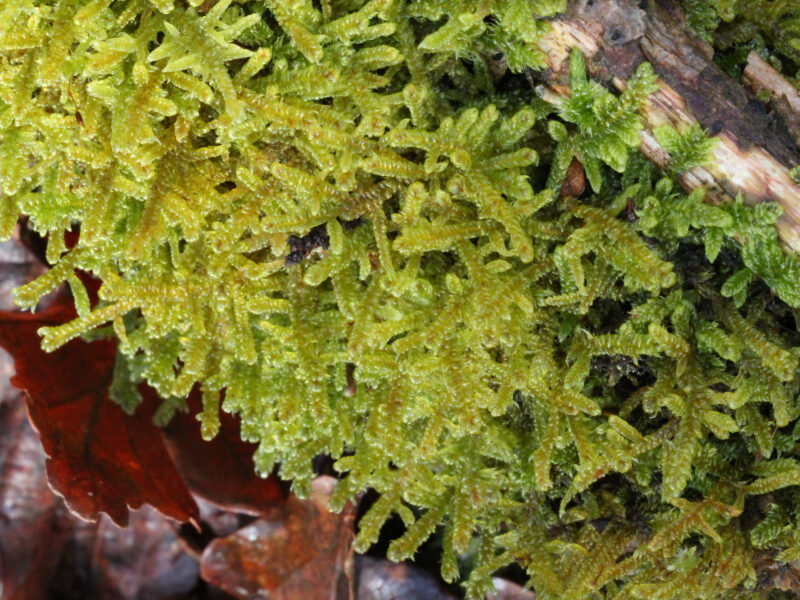Identification notes
This is an increasingly frequent epiphyte in many areas, but its habit of growing as relatively small patches in unpreposessing places makes it easy to miss. It grows on a wide range of trees and shrubs and seems to like ‘scruffy’, secondary or edge habitats such as trees growing on disused railway embankments or in flailed hedgerows. It also often frequents trees and shrubs on the banks of watercourses, reservoirs and other standing water.
Once known, it is a straightforward enough species to identify. It forms silky-looking, dense patches on bark, somewhat resembling a species of Hypnum. When the shoots dry a little, they have a tendency to look fluffy and slightly curled upwards, in a most un-Hypnum kind of way. Capsules, which are usually to be found throughout the year, are relatively slender and borne on rather long, deep red setae. A good way to separate Pylaisia from Hypnum cupressiforme var. resupinatum is to search the shoots for the presence of bud-like dwarf fertile branches – when present they are usually numerous and rather eye-catching.
Examination of capsules under the compound microscope will show that the exothecial cell walls of Pylaisia are equally thickened (see images), whereas those of H. cupressiforme var. resupinatum have unequally thickened walls.
Read the Field Guide account











